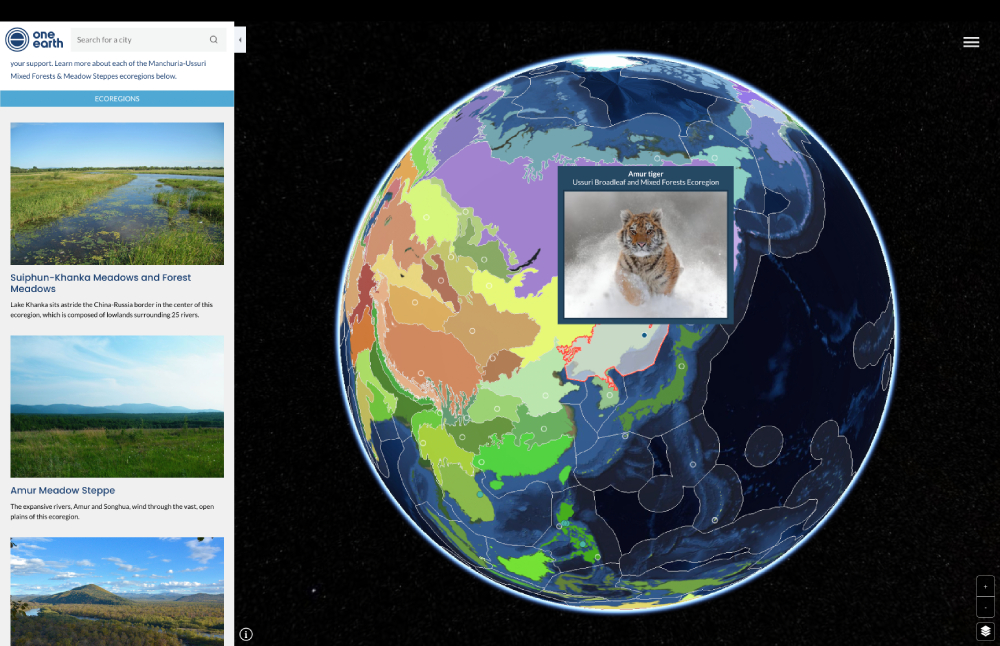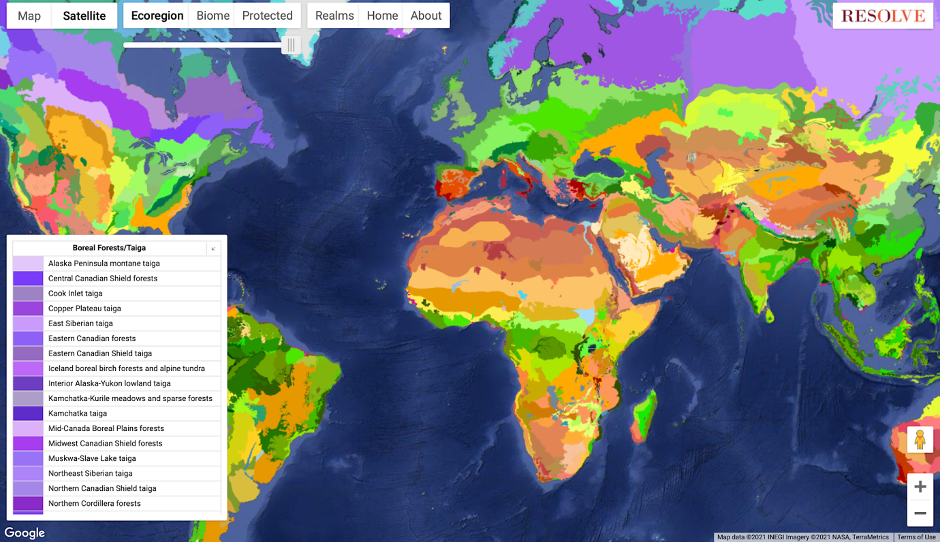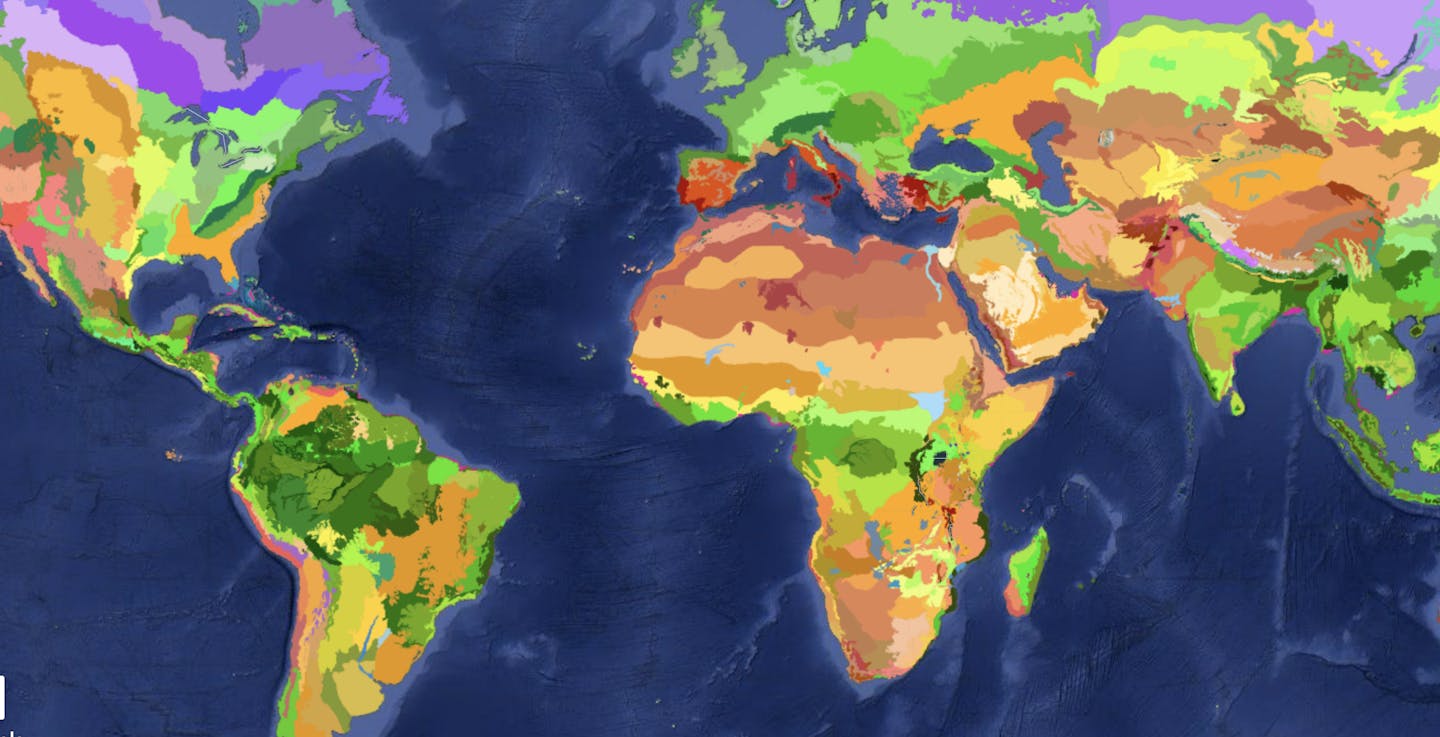Announcing the release of Ecoregion Snapshots
RESOLVE and One Earth are pleased to announce the release of Ecoregion Snapshots, a concise guide to the terrestrial ecoregions of the world. These terrestrials ecoregions represent a new way of looking at life on Earth. Think of it as a new world map, a canvas painted by nature and informed by the distribution of plants and animals, the effects of mountain ranges, and other geographic and climatic features that determine “who lives where” in the natural world. Now available on One Earth organized into the Bioregions Framework, these Ecoregion Snapshots become the “travel brochures” that highlight the most outstanding features of each place and why these natural treasures should be conserved.

The Ecoregion Snapshots can also be explored through the One Earth Navigator.
Beginning 1995, Dr. Eric Dinerstein and other wildlife biologists published lengthy, highly technical descriptions of the world’s 800+ terrestrial ecoregions, written for the scientific community and compiled in multiple book volumes. Since its introduction, the ecoregion framework has become widely adopted and cited in thousands of papers in peer-reviewed scientific journals. It serves as a centerpiece in the global analyses of biodiversity conservation priorities, such as an Ecoregion-based Approach to Protect Half of the Terrestrial Realm, the Global Deal for Nature, and the Global Safety Net to reverse biodiversity loss and stabilize the climate.
To make these lengthy descriptions accessible to the widest possible audience, RESOLVE and One Earth embarked on a mission: to advance “ecoregion-based knowledge”—an ecological sense of place—by distilling the essence of each technical description into highly readable one-page snapshots. We worked with a team of leading biodiversity scientists and world experts in conservation—including some of the same authors of the original descriptions—to create engaging narratives that draw readers into the fascinating landscapes of natural wonders present in each ecoregion. Every Snapshot includes recent information on local biodiversity features, protected areas, and overarching threats, accompanied by stunning photos of the habitat and important wildlife species. We also list priority conservation actions that are needed in the next decade in order to safeguard the biodiversity of each ecoregion. Finally, we identify flagship species—a “mascot” that represents the unique biogeography of the ecoregion.
Ecoregions are defined as areas of land containing a distinct set of natural communities and species, different from their nearest neighboring ecoregions. Depending on their unique biogeographic history, ecoregions range in size from St. Peter and St. Paul Rocks (6 km2)—an island group in the Atlantic Ocean once visited by Darwin during his 1860 expedition—to the East Siberian Taiga (3.9 million km2), home to one of the largest tracts of boreal forests in the world. The Central Persian Desert Basins ecoregion supports the only remaining Asiatic cheetah population in the world, while the Eastern Cordillera Real Montane Forests ecoregion is home to the olinguitos, the first new species of South American carnivore to be discovered in 35 years.
Each ecoregion is more than just a list of superlatives; there are also obscured scientific insights brought into the light.
Now, readers are one click away from learning about the ecoregions they are interested in or have visited. At the same time, this information can be incorporated by conservationists and policy-makers to guide the development of ecoregion plans. In the near future, these snapshots will also be compiled as a stand-alone collection and available for download.

A map of the terrestrial ecoregions of the world, available on https://ecoregions.appspot.com/
View the global map of all terrestrial ecoregions here.
Shapefiles of the ecoregion boundaries can be downloaded here.
The ecoregion snapshots have been condensed or written by Dr. Aleks Terauds (Australian Antarctic Division), Dr. Chris Carpenter (Wildlands Studies), Dr. David Olson (WWF-Hong Kong), Dr. Eric Wikramanayake (WWF-Hong Kong), Dr. Jan Schipper (Arizona Center for Nature Conservation/Phoenix Zoo), Dr. Reed Noss (Florida Institute for Conservation Science), and the UN Environment Programme-World Conservation Monitoring Centre Author Team (led by Emma Martin and Dr. Neil Burgess). The project is funded by One Earth and descriptions reviewed by RESOLVE’s Biodiversity and Wildlife Solutions Team: Eric Dinerstein, Carly Vynne, Sanjiv Fernando, Andy Lee, and Pauline van Tulder.
Explore the One Earth Navigator


